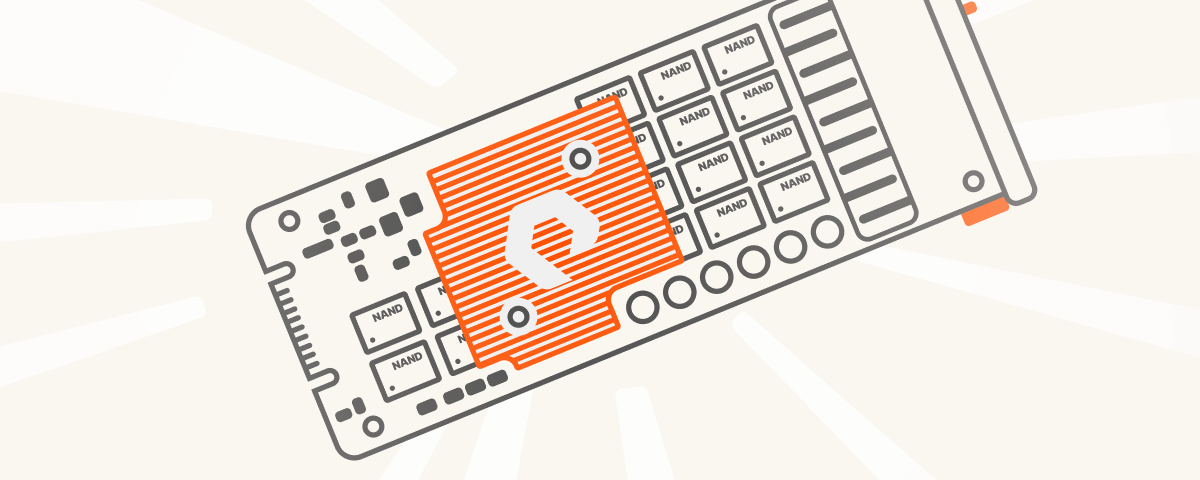Solid-state disk (SSD) vendors today offer QLC NAND flash-based devices. Can’t storage systems vendors building systems from these devices offer advantages similar to DirectFlash over HDD-based systems?
It is true that COTS SSDs offer better performance, storage density, and reliability than HDDs, but they aren’t better enough in all those areas to pose an existential threat to nearline enterprise HDDs in the near term. They are, however, better enough to replace some all-HDD systems, depending on workload requirements. Pure Storage systems built with DirectFlash technology, however, deliver two to five times better cost efficiencies than COTS QLC SSDs today (and up to 10x better cost efficiencies than HDDs). The biggest COTS SSDs shipping in volume today are 15TB devices (although 30TB devices are available) while Pure ships 75TB devices (2023), and our storage density advantage will increase rapidly over the next three years. This is enough of a difference to threaten HDD survival. Projecting out cost per gigabyte reductions with COTS SSDs does not suggest that they could cost-effectively replace all-HDD systems within this decade. But Pure Storage DFMs, with their 2x-5x better cost efficiencies than COTS SSDs, make that possible today. The end of disk is predicated on the spread of flash media technologies like Pure Storage DirectFlash, not the availability of storage systems based on COTS QLC SSDs.
So how is DirectFlash different from COTS SSDs?
The strategy of Pure Storage to develop DirectFlash technology in its Purity operating system was a momentous decision versus the legacy industry’s use of COTS SSDs. The Purity Operating System manages the NAND flash chips system-wide both directly and globally, optimizing the storage semiconductor for performance, capacity, reliability and longevity. We create our own proprietary DFMs, and use Purity along with our high-capacity DFMs as the basis to build enterprise-class storage systems that are optimised for the full range of storage requirements.
Contrast this with COTS SSD-based systems. SSDs were designed by disk manufacturers to make it easier for HDD based systems to use flash technology. Given the wide range of systems and operating software which employed HDDs almost two decades ago, the flash manufacturers came up with a brilliant idea – create a module that was hardware and software identical to an HDD. Thus the SSD was born. SSDs could thereby be used as general-purpose devices and sold to serve consumer, commercial and enterprise environments. But, in using a semiconductor to mimic a mechanical device, SSDs significantly reduce much of the native advantage of flash technology.
COTS SSDs have an FTL to make them emulate HDDs and need to contend with significant HDD baggage. While this makes it easier to integrate them into storage systems originally designed for HDDs, the FTL imposes performance, media reliability, endurance, capacity utilization, and cost disadvantages relative to flash storage devices that are managed directly as flash. The media in each COTS SSD is managed individually by a controller within that device without any visibility of what is happening elsewhere in the storage system, a design which results in less predictable performance (particularly as storage devices fill up), more write amplification and poorer capacity utilization.
Compared to the 15TB COTS QLC SSDs that are shipping in volume today, Pure Storage’s 75TB DFMs as managed by Purity deliver more consistent performance as workloads scale, devote more board real estate to data, have five times higher storage density, demonstrate five times better reliability, squeeze out 15-30% higher capacity utilization, and have a lower cost per terabyte at the device level than COTS SSDs.
Pure Storage leads the industry in efficiency (as measured by watts/TB) and storage density (as measured by TB/U). This is no idle claim. With 75TB DFMs, Pure delivers system-level operating watts per TB well under 1W and a storage density of 1PB/U for systems in the 1–30PB range. Even if the SSD vendors could deliver larger device capacities today, storage systems vendors lack the ability to effectively address all that capacity. Larger capacity devices do not help lower the cost per gigabyte if that extra capacity cannot be effectively used. Pure Storage’s DirectFlash technology enables systems to use and recover very large capacity devices – ask us about it and we’ll tell you how we do that.




